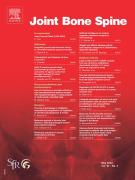Clinical spectrum and outcome of Takayasu's arteritis in children - 01/10/24
 , Perrine Dusser a, Audrey Laurent b, Irene Lemelle c, Pascal Pillet d, Cloé Comarmond e, Arsene Mekinian f, Marc Lambert g, Tristan Mirault h, Ygal Benhamou i, Alexandre Belot b, Eric Jeziorski j, Héloïse Reumaux k, Jean Sibilia l, Alexandra Desdoits m, Olivier Espitia n, Albert Faye o, Pierre Quartier p, David Saadoun q, Isabelle Koné-Paut a
, Perrine Dusser a, Audrey Laurent b, Irene Lemelle c, Pascal Pillet d, Cloé Comarmond e, Arsene Mekinian f, Marc Lambert g, Tristan Mirault h, Ygal Benhamou i, Alexandre Belot b, Eric Jeziorski j, Héloïse Reumaux k, Jean Sibilia l, Alexandra Desdoits m, Olivier Espitia n, Albert Faye o, Pierre Quartier p, David Saadoun q, Isabelle Koné-Paut aHighlights |
• | Paediatric TAK are more severe with more inflammation and kidney damages. |
• | Prognosis is worse with more relapses and death. |
• | Rapid initiation of biotherapy might be a key to avoid those complications. |
Abstract |
Objectives |
We aimed to compare clinical spectrum and outcome between adults and children with Takayasu's arteritis (TAK) in a European population.
Methods |
We made a nationwide retrospective observational study between 1988 and 2019. All adult patients met the ACR diagnostic criteria for TAK and all children met the EULAR/PRINTO/PRES criteria for paediatric TAK.
Results |
We identified 46 children and 389 adults with TAK. The male to female ratio was 34/46 (0.74) in the paediatric group compared to 241/274 (0.88) in the adult group (P<0.05). Children presented with significantly more systemic symptoms; i.e., fever (P<0.05), fatigue (P<0.001), weight loss (P<0.001), abdominal pain (P<0.05), and myalgia (P<0.05) while adults had more upper limb claudication (P<0.01). Topography of the lesions differed significantly between the two groups: adults had more damage at the cerebral vasculature (P<0.01), upper and lower limbs (P<0.001) while children had more kidney lesions (P<0.05). Children TAK had more frequent (P<0.01) and higher (P<0.001) biological inflammation than adults. Children received higher dose-weight of corticosteroids (P=0.001) and less biotherapy (P<0.010) at diagnosis. Relapses (P<0.05) and death (8.6% vs 4.9%) were more frequent in children TAK than in adults.
Conclusion |
Paediatric TAK seems more severe than adult TAK. Therefore, paediatrics patients may require closer monitoring and systemic use of biological treatment.
Le texte complet de cet article est disponible en PDF.Keywords : Takayasu's arteritis, Children, Prognosis, Biotherapy
Plan
Vol 91 - N° 5
Article 105735- septembre 2024 Retour au numéroBienvenue sur EM-consulte, la référence des professionnels de santé.
L’accès au texte intégral de cet article nécessite un abonnement.
Déjà abonné à cette revue ?

